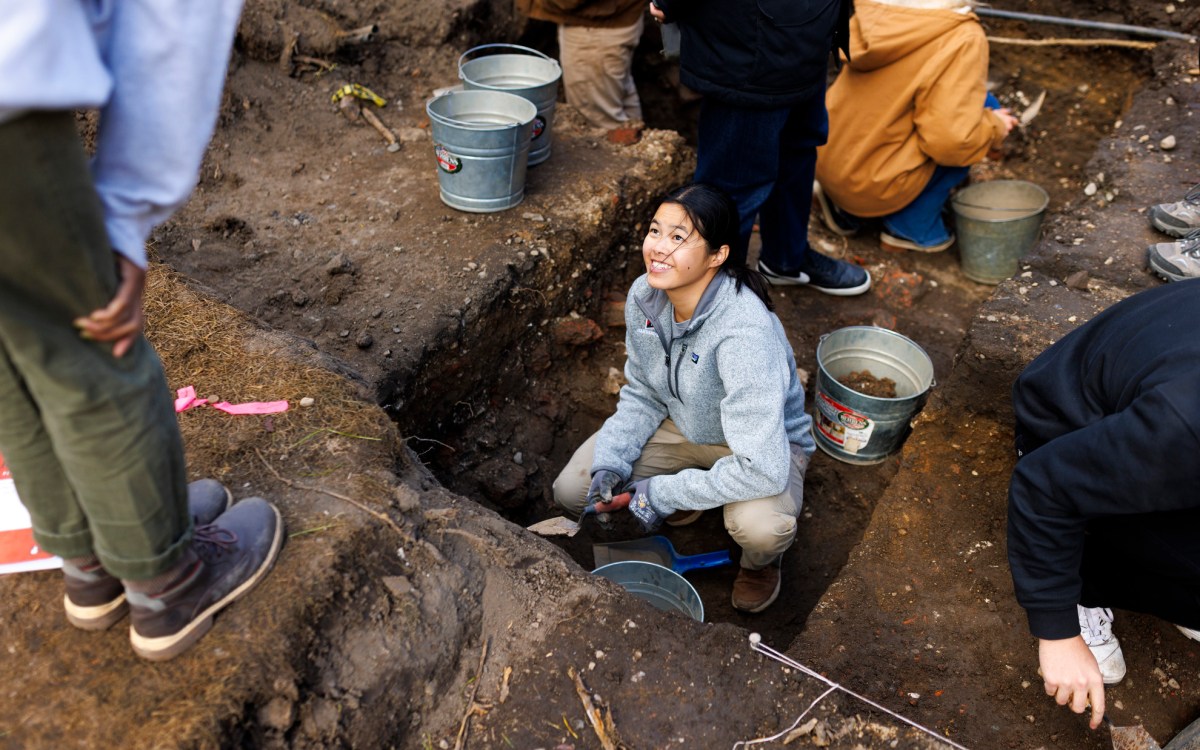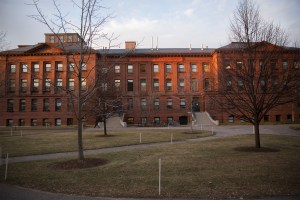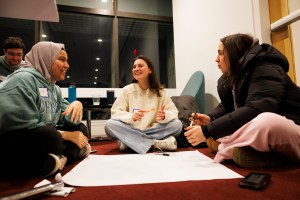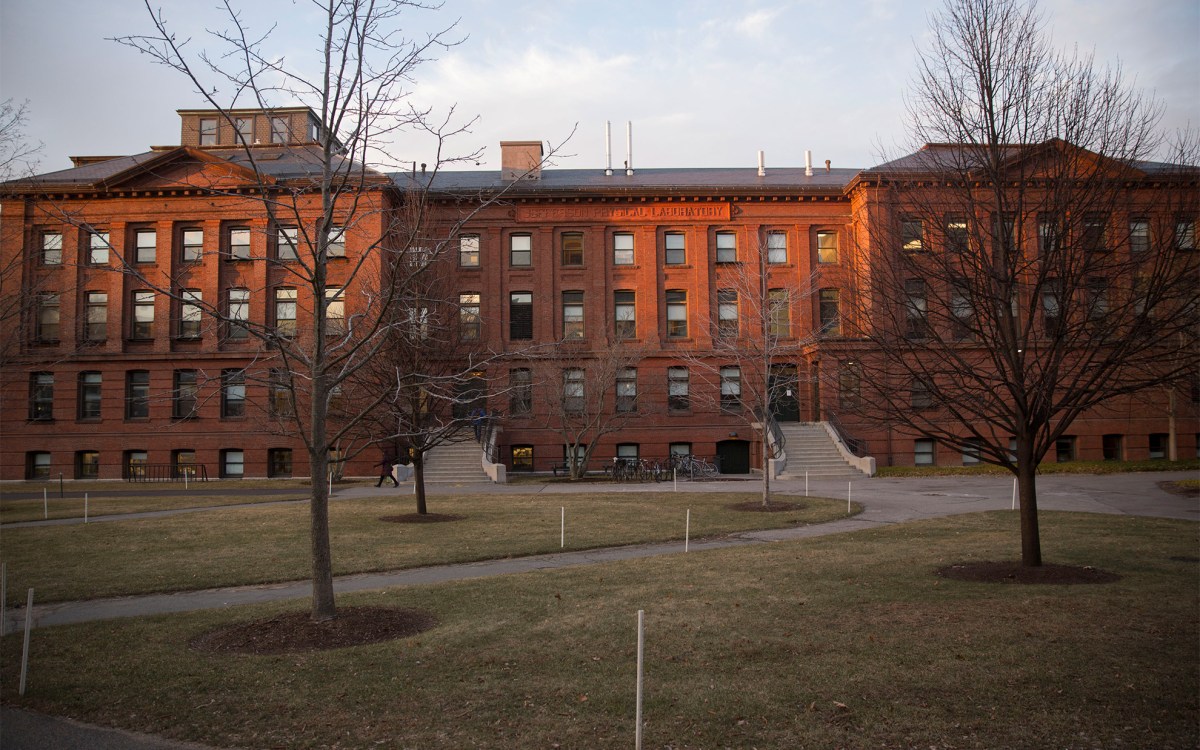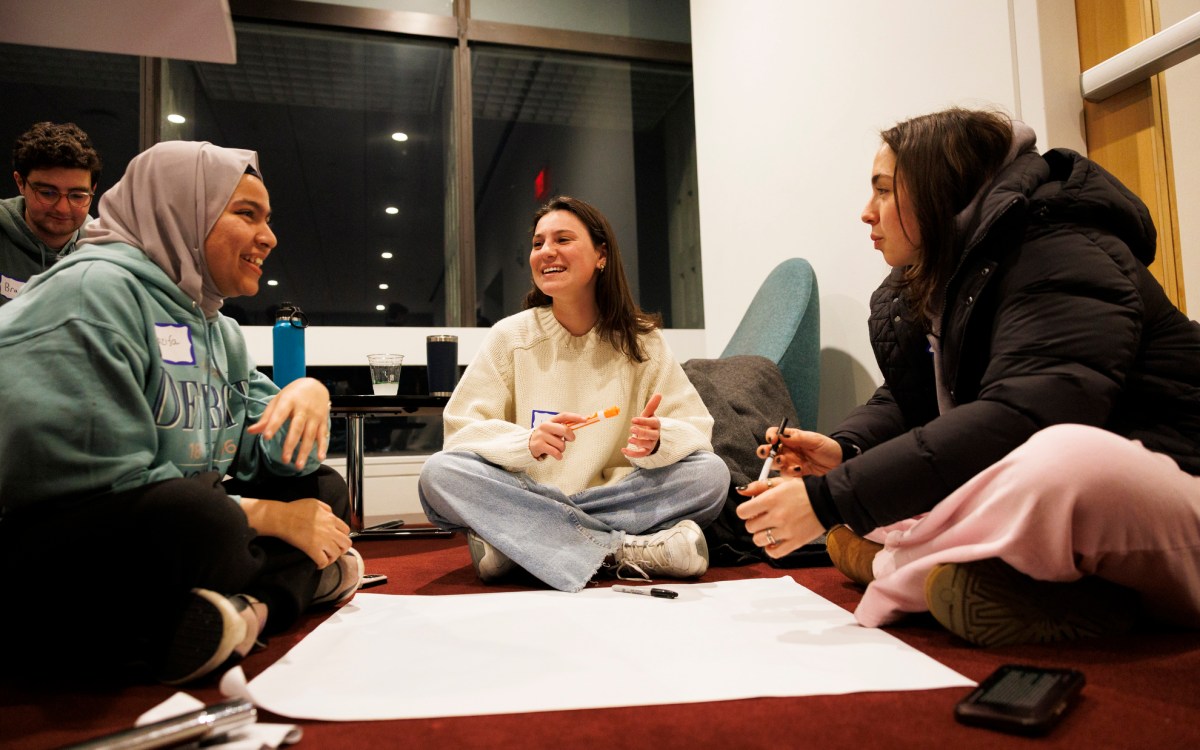When the falcons come home to roost
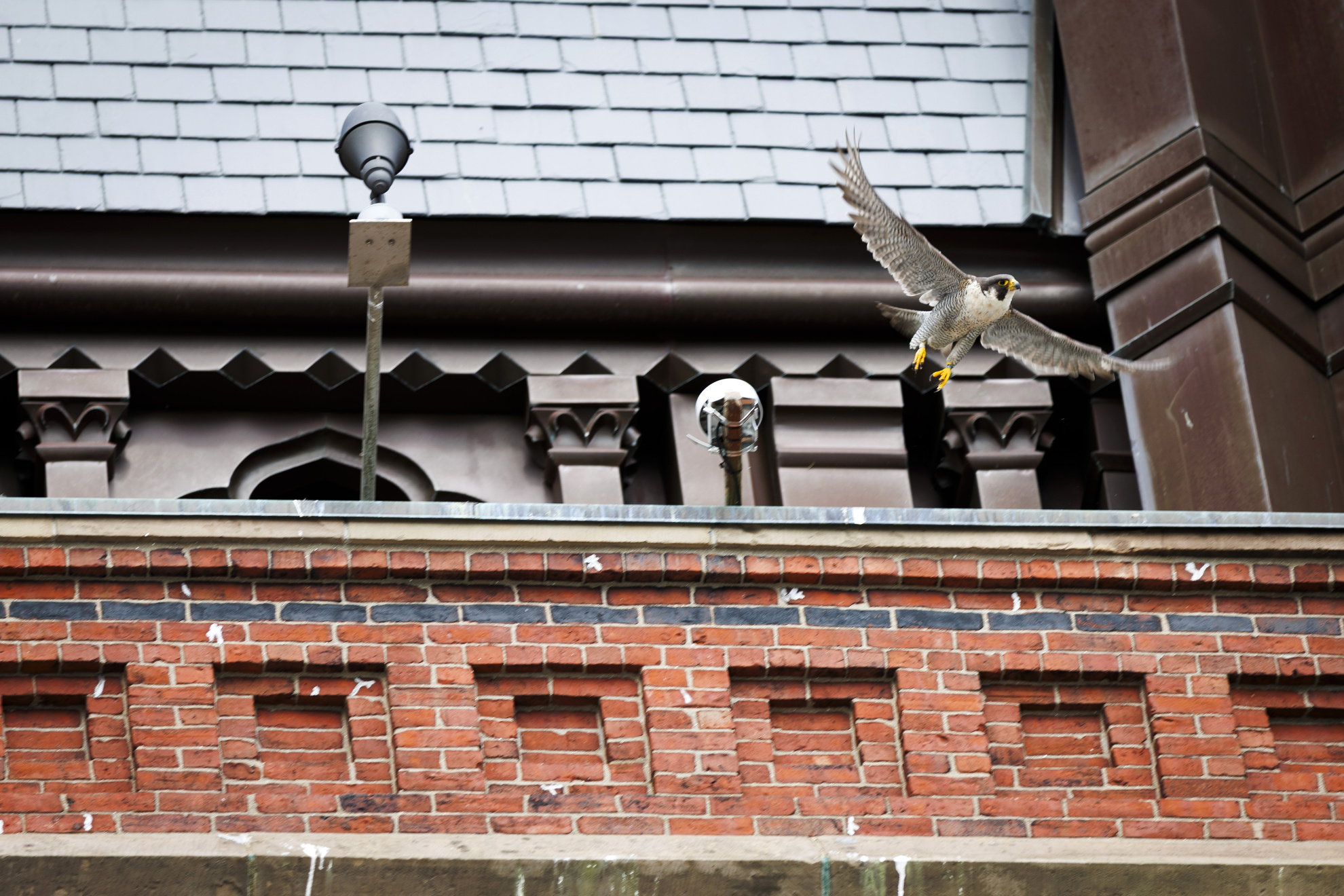
A nest cam has been installed to livestream a pair of peregrine falcons atop the Memorial Hall tower.
Photos by Stephanie Mitchell/Harvard Staff Photographer
Peregrines have rebounded since DDT era and returned to Memorial Hall. Now new livestream camera offers online visitors front row seat of storied perch.
A new wildlife camera mounted on Memorial Hall is giving online visitors an up-close glimpse of a peregrine falcon nesting site with a storied history.
The FAS installed the Peregrine Falcon Cam this spring on the east side of the tower, facing the rooftop nest box. There have been frequent sightings of two falcons, one male and one female, who appear throughout the day to eat, preen, and rest when they aren’t hunting.
“Buildings are natural canyons for them,” said Brian Farrell, Monique and Philip Lehner Professor for the Study of Latin America, professor of biology, and curator of entomology in the Museum of Comparative Zoology. “They’re like cliffsides, and they have loads of starlings and pigeons around, so plenty of food. They like the high perches because they hunt only birds in flight, and only over open spaces.”
The Memorial Hall site has a long history — late pioneering biologist and Harvard professor emeritus Edward O. Wilson observed peregrine falcons nesting there as a Ph.D. student in 1955. But the U.S. peregrine population was decimated by the pesticide DDT in the mid-20th century, and none of the birds of prey were seen on Harvard’s campus for years.
Ray Traietti, director of administration in the Office for the Arts and former building manager of Memorial Hall, realized the birds had returned one day in 2014. He was walking into work when a severed starling head dropped at his feet.
“I started noticing pieces of dead birds all around. I was like, ‘Oh, this is kind of odd,’” Traietti recalled. Officials from the Massachusetts Division of Fisheries and Wildlife would later discover that the falcon eggs laid on the rubber roof of Memorial Hall weren’t viable that year, likely due to exposure to the elements.
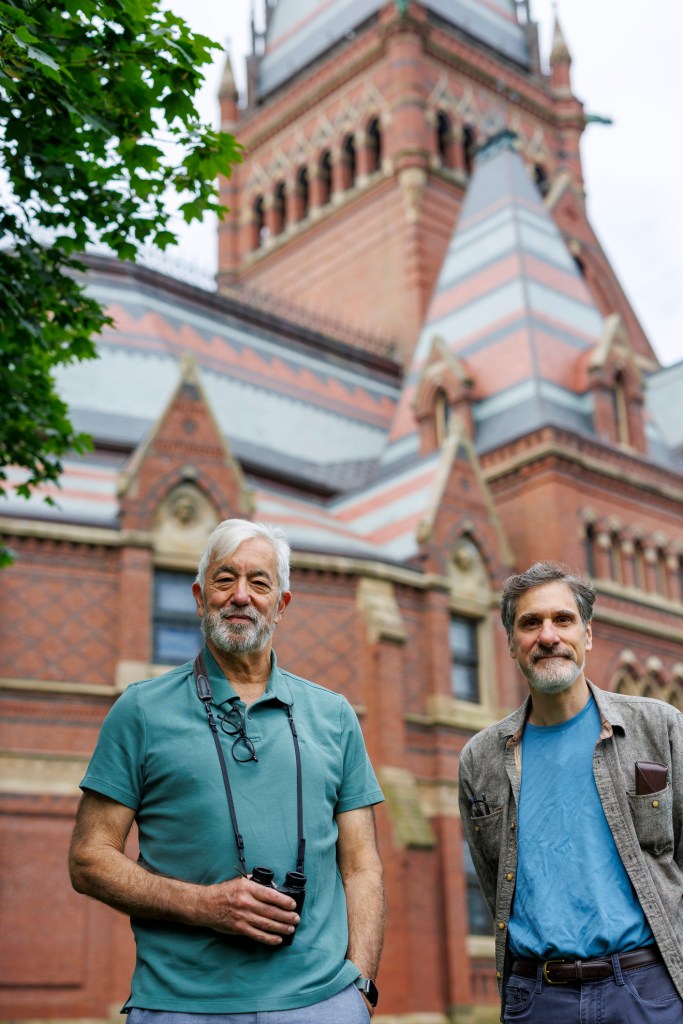
State officials installed the box the next year to protect future nests. The three-sided design allows the fastest birds on Earth to leave the nest with their signature move: a dive that can reach 200 mph.
“They need open space to launch themselves,” Farrell said. “They don’t flap and go up vertically like birds with broader wings can do. They just take off like fighter jets off an aircraft carrier.”
In the spring of 2021 a pair of falcons successfully hatched and fledged three chicks — the first known to hatch on Memorial Hall since the 1950s.
“I think, to E.O. Wilson’s point, there’s something about that location that works for them,” Traietti said. “To think that after the nationwide decimation of DDT, that they went back to that same spot, is pretty remarkable.”
“The world seems more chaotic every day, but here’s something that’s beautiful and pure and continuing on.”
Brian Farrell
After the federal DDT ban in the 1970s, a reintroduction effort followed, and the falcon population has slowly increased. Previously designated endangered in Massachusetts, they were moved to the less critical “special concern” category in 2019. As of 2020, there are at least 46 nesting pairs in the state.
“These animals are living in a pretty human ecosystem, and they’re thriving,” Traietti said. “When you see them up there, it’s a testament to coexistence.”
The Memorial Hall falcons have been a rotating cast, but one familiar face keeps returning. Fellsway (banded with the number 79/CB) has nested at Harvard for the past three years. He was found injured in Medford and rehabilitated at the Tufts Wildlife Clinic in 2021.
He raised three chicks on Memorial Hall in spring 2023 with an unbanded female (Traietti calls her “Athena,” after the stained-glass window in Sanders Theatre). Fellsway and Athena returned in 2024 and raised four more chicks.
But in a surprising turn this year, Fellsway returned with a new mate: Letitia, identified by leg band 28/BV, who was previously seen nesting at Boston University. According to Farrell, she and Fellsway haven’t laid eggs at Memorial Hall — likely because their bond is new, though also possibly because Letitia hatched a brood with another male at BU just last month.
“It’s an interesting and complex drama of pairings and places,” Farrell said. “It’s a little bit confusing trying to keep track of these guys and figure out who’s who, because they’re almost indistinguishable as adults. You have to get a good enough photograph that you can read the band.”
This fall, Traietti says, a new nest box will be installed. He and Farrell are hopeful that there will be a nest next spring.
In the meantime, Farrell said he is glad the Falcon Cam can help the Harvard community feel connected to the fierce, powerful birds living just overhead.
“It’s really about outreach and sharing science with the world,” Farrell said. “The world seems more chaotic every day, but here’s something that’s beautiful and pure and continuing on.”
